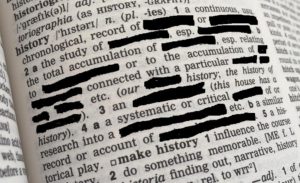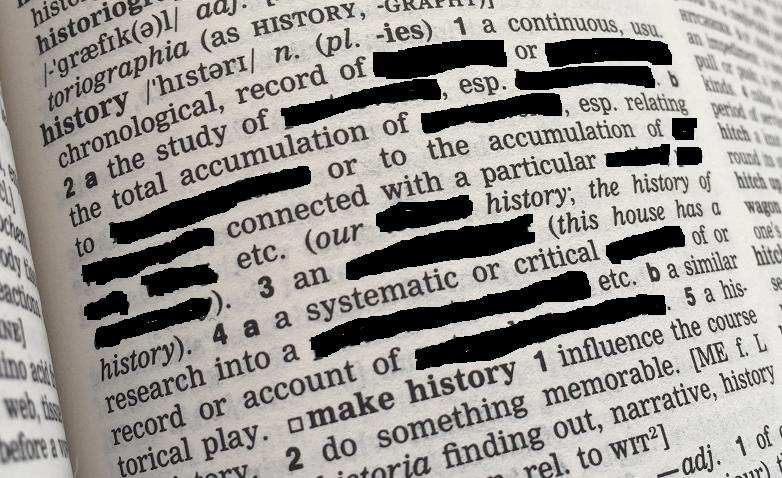15 March 2018
Back to the Dark Ages
Damnatio memoriae.
By Neil Tidmarsh
 Here’s a mystery.
Here’s a mystery.
Last month I saw an exhibition called “Crossroads” at the Allard Pierson Museum in Amsterdam. The Allard Pierson is the University of Amsterdam’s archaeology museum. The exhibition was about Europe in the early middle ages, about the peoples, journeys, migrations and exchanges which gave birth to Europe between AD300 and AD1000. It was produced by CEMEC (an EU-funded group of Continental universities and museums) in association with a number of other institutions including Oxford’s Ashmolean. It was funded by the EU, and the EU’s badge was prominent throughout.
The mystery is this: Britain was completely absent from the exhibition.
It appeared on the map on the floor of the first room, but there was no sign of it elsewhere. On the walls around the map, each of the peoples of Europe at the time were introduced – ‘Huns’, ‘Goths’, ‘Franks’, ‘Irish’, ‘Vikings’ etc – but there was no mention of the Anglo-Saxons, let alone the Celtic-speaking Britons. And Britain was just as invisible in the other rooms.
Now, Britain made a not insignificant contribution to European culture in those centuries (I make no apologies for this very un-British boasting – there’s no place for modesty in a fight like this). The Pelagian heresy; the King Arthur legend; the migration of Britons to Brittany; international scholarship (Alcuin at Charlemagne’s court, Bede’s History); art which combined Classical, Germanic and Celtic influences (the Lindisfarne gospels, Kentish jewellery); secular literature (Beowulf, the Gododdin); a vernacular Bible (King Alfred’s translations); St Patrick’s mission from Britain to Ireland; Augustine’s mission from the Continent to Britain; Theodore of Tarsus’ reforms; the idea of the nation state (England emerged as a fully-formed political entity in this period, five hundred years ahead of France and Spain and one thousand years ahead of Italy and Germany); the development of Frisia’s obscure Germanic dialect into what would become the global language of the twenty-first century; etc, etc, etc.
The omission of Britain from this exhibition was a serious distortion of the story it’s trying to tell. It claims to cover the whole of Europe, not selected parts of it, promising “a variety of unique objects from all over Europe” and “countless beautiful objects from every corner of the continent” – but there were none from this particular north-western corner of Europe. CEMEC doesn’t include any UK museums or universities, but surely it could have invited UK institutions (such as the Ashmolean, which after all was credited as a partner) to lend artefacts from their collections?
It looked as if someone had taken a curatorial decision to omit Britain from the exhibition. Why?
Neither the Allard Pierson nor the Ashmolean has replied to my emailed enquiries, so I can only answer that question with my own conclusions. It seems that there are two possible explanations. Either it was simply shockingly poor scholarship – carelessness/ignorance – or it was something more disturbing and even frightening; a political power’s imposition of its own ideological agenda on an academic endeavour. Some form of political censorship. The EU was paying the piper here; was it also calling the tune?
That kind of thing wouldn’t surprise us in Russia or China, but it’s not supposed to happen in modern Europe. It has happened in Europe in the past, of course, in the bad old Europe when powerful supra-national bodies held sway across the Continent. A Roman emperor’s decree of damnatio memoriae would wipe history clean of all record of a hated rival or dangerous enemy. The Papacy wasn’t very happy when Galileo announced that the earth revolved around the sun – the Church had always said that the sun revolved round a stationary earth. It forced him to declare that the earth didn’t move, after all, and put him under house arrest.
But Galileo’s phrase “Eppur si muove” – “And yet it does move”, the words he muttered on leaving the Vatican after the Inquisition had forced him to recant – has been a rallying cry for scientists and scholars ever since. Facts are facts, Galileo was saying, scientific truth is absolute and unchangeable, no matter what religious or political authority might say or insist or threaten. This was the moment when modern science – Europe’s great gift to the world – was born. The moment when Europe’s future slipped out of the repressive hands of benighted authority, religious or political.
And yet, here we are in the twenty-first century, with an EU-funded exhibition denying an objective truth – that Britain is part of Europe. By the facts of geography, genetics and thousands of years of cultural history, Britain is a European country. The exhibition was a perfect and timely opportunity to remind everybody that the British are a European nation with ancestral origins on the Continent. But it was an opportunity sadly missed; this was an exhibition about the people and journeys which made Europe, and yet it turned its back on one of the most significant of them – the migration of Germanic peoples across the North Sea to Britain. Instead of looking open-minded and objective, it looked narrow-minded and vindictive. And it begged a more serious question; could Europe be in danger of slipping back into the bad old days when authority says “black is white and white is black”, and the intelligentsia says “yes, I agree”? That would be the death of European scholarship and intellectual endeavour, of course. And from there it’s just a short step to authority declaring that the innocent are guilty and the guilty innocent, that right is wrong and wrong is right, as it declares every day in many other parts of the world.
Why might the EU want to remove Britain from Europe’s history? Why might it want to claim that Britain is not part of Europe? Because the EU’s credibility depends on its claim that the EU is Europe, that Europe is the EU, perhaps? The claim is nonsense, of course – Europe existed for quite a while before the EU – but a nonsense which many have been brain-washed into swallowing, nevertheless; and a nonsense challenged by Brexit, with Britain insisting that it’s leaving the EU (a political construct) but not leaving Europe (a geographical and cultural reality). Europe is bigger than the EU. The European Project is bigger than the EU, which is only the latest of a number of manifestations of this project since the end of World War II.
Britain is big enough and confidant enough to laugh off the absurd omissions and distortions of the “Crossroads” exhibition, even while pointing out that someone has jumped the gun because the UK hasn’t actually left the EU yet, and that as a net contributor to EU funds the UK is actually paying CEMEC to write the UK out of the history books. (The ironies are hilarious; the exhibition insists that its story is about plurality, diversity and inclusion, but it excludes the character who has recently chosen a diverse path at odds with the current orthodoxy.) But the suspicion remains that CEMEC has compromised itself by accepting the ideological agenda of its political paymaster, and that’s a frightening prospect for European scholarship, and for European citizens generally.
So, CEMEC, please tell me that you’re guilty of nothing worse than bad scholarship; please tell me that you haven’t sold your intellectual integrity for thirty shiny pieces of euro silver. Either way, it doesn’t reflect very well on you, all you museums and universities of CEMEC. Nor on you, Ashmolean. Shame on you all.
Eppur si muove. Britain is a European country. The EU is not Europe. Call it heresy if you like, but it’s still true.


